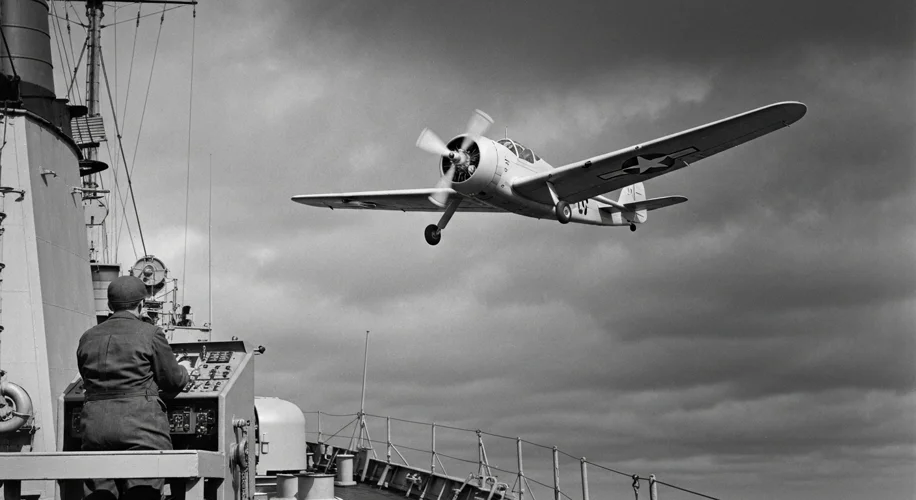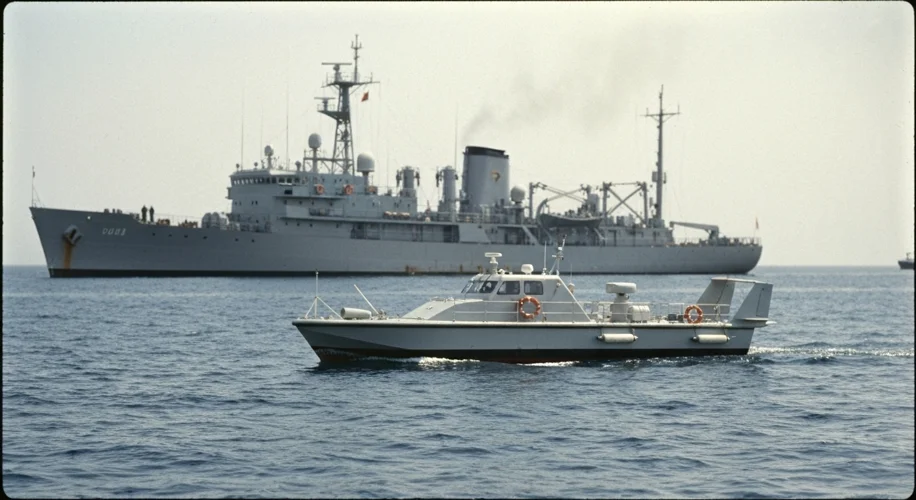The gentle hum of a propeller, the distant cry of gulls, the vast expanse of the ocean – these are the timeless elements of naval warfare. For centuries, battles at sea were a visceral dance of steel, gunpowder, and human courage. But beneath the surface of this familiar theater, a revolution was brewing, one that would redefine the very nature of naval engagement. This is the story of the dawn of drone warfare at sea.
While the term “drone” might conjure images of sleek, modern aircraft, the concept of unmanned aerial or maritime vehicles has roots stretching back further than many might imagine. Early experiments in the late 19th and early 20th centuries explored the potential of remotely controlled craft for reconnaissance and attack. Imagine the daring of early aviators, strapping themselves into fragile machines, only to envision their successors flying without a pilot, a ghost in the machine guiding their path.
The true acceleration of this technology, however, was spurred by the crucible of conflict. During World War II, the concept of the “Queen Bee” – a pilotless target aircraft used for gunnery practice – laid crucial groundwork. These were not weapons of destruction in themselves, but rather the precursors, the silent students in the grand academy of aerial warfare. Their development pushed the boundaries of radio control and aerodynamic stability, principles that would later be vital for more sophisticated systems.

The post-war era saw continued, albeit often clandestine, development. The Cold War arms race, with its emphasis on intelligence gathering and the need to operate in increasingly dangerous environments, fueled advancements in unmanned vehicles. Naval forces, in particular, recognized the potential. Consider the perilous nature of mine detection or coastal surveillance in hostile waters. Sending an unmanned vessel, a “boat” without a crew, into such environments offered a significant advantage – reducing risk to human life.
One of the key shifts came with the refinement of radio communication and early forms of guidance systems. The idea wasn’t just to control a craft from afar, but to imbue it with a rudimentary ability to follow a pre-programmed course or react to basic environmental cues. This was the nascent stage of autonomy, a far cry from today’s sophisticated artificial intelligence, but a vital leap nonetheless.
By the latter half of the 20th century, naval drones began to take more concrete forms. These were often simple, unglamorous machines designed for specific tasks. Remote-controlled boats were deployed to detect and neutralize naval mines, saving countless sailors from hazardous work. Unmanned aerial vehicles (UAVs), though primarily associated with land-based operations, also found roles in naval reconnaissance, offering eyes in the sky over vast ocean expanses where traditional aircraft might be too vulnerable or logistically complex to deploy.
However, the true paradigm shift began to emerge with the development of more capable and versatile unmanned systems. The shift was not just in capability but in philosophy. Instead of viewing drones solely as expendable tools for dangerous tasks, navies began to see them as force multipliers – platforms that could extend the reach, endurance, and effectiveness of their human-crewed fleets. Imagine a fleet of small, unmanned surface vessels (USVs) fanning out ahead of a carrier group, acting as an early warning system, detecting submarines or incoming missile threats long before the main fleet could.
The impact was profound. The introduction of these technologies began to alter strategic thinking. The ability to conduct persistent surveillance, to operate in denied areas, and to project power without risking valuable human lives opened up new tactical possibilities. The traditional calculus of naval warfare, which always weighed the risk to personnel, began to change. This wasn’t about replacing humans, but about augmenting their capabilities and creating entirely new operational doctrines.
The dawn of drone warfare at sea marked a significant technological inflection point. It signaled a move towards greater automation, enhanced situational awareness, and the potential for truly distributed naval operations. The sea, once a domain dominated by the visible might of battleships and aircraft carriers, was becoming a space where unseen wings and silent hulls could wage war, a testament to humanity’s relentless drive for innovation, even in the grim theater of conflict.
As we look back at these early developments, we see the seeds of today’s highly advanced naval drone systems. The journey from rudimentary target drones to sophisticated autonomous vessels is a compelling narrative of human ingenuity responding to the challenges of a complex world. The unseen wings of war had taken flight, and the oceans would never be the same.

